The 5 most important monuments to see in the Dominican Republic
The Dominican Republic is a country with a great history and some of its best representatives are its emblematic monuments. In this publication we invite you to travel through the 5 monuments to visit in the Dominican Republic: the Monument of the Heroes of the Restoration, the Columbus Lighthouse, the Obelisk, the Monument of the Mirabal Sisters and the Monument of the Constituents. At the end of this reading, you will not only know the history of each monument, but you will also understand its importance and place in society.
So pack your bags and let yourself be swept away by the history and culture of the Dominican Republic. Each of these monuments is an important page in the history of the country and the soul of its people. From the Monument to the Heroes of the Restoration in Santiago to the Obelisk in Santo Domingo, we promise to take you to the heart of the Dominican.
Monument to the Heroes of the Restoration
History of the Monument to the Heroes of the Restoration
The Monument to the Heroes of the Restoration is one of the most important landmarks in the history of the Dominican Republic, located in Santiago de los Caballeros - the capital city - as part of the effort to honour and commemorate those who participated in the War of Restoration of 1863-1865, in which Dominicans fought against Spain for independence from colonialism. The monument was built as part of this fight for liberation, which eventually led to their freedom being declared.
This massive structure not only honours those who fought for freedom, but also offers breathtaking views of Santiago de los Caballeros and its surroundings. Originally named the "Trujillo Peace Monument" as part of several projects undertaken in Santiago de los Caballeros at the time, it has since become a symbol of national pride and serves as an example of the Dominicans' capacity for victory.
Architecture and Design
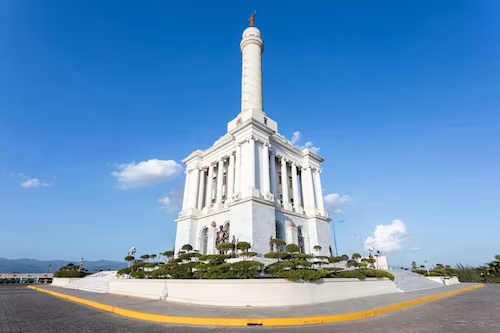
The Henry Gazon Bona Monument stands 67 metres tall and is composed of bronze and stone. Each part symbolises the ill-gotten gains and triumphs associated with Dominicans as a people; its style is neoclassical with an imposing central column representing their spirit, resistance, determination and perseverance - which is also reflected in the base with murals depicting prominent figures such as Gregorio Luperon and other warriors of the Restoration period.
Cultural Importance
Santiago de los Caballeros The Monument to the Heroes of the Restoration is more than an iconic symbol of freedom; it is also a focal point for patriotic and cultural activities. Every year, on 16 August, it serves as the centrepiece of the festivities commemorating this historic event during the Restoration Day celebrations held in its place. This year marks the 21st anniversary!
The Obelisk of Santo Domingo
Historical Significance of the Obelisk
The Obelisk, or "Obelisco Macho" as it is also known, can be defined as a statue that stands on Santo Domingo's Malecon and was erected under the regime of Rafael Leonidas Trujillo to mark the transformation of Santo Domingo into Ciudad Trujillo in 1936. However, after the fall of the regime, the monument became an iconic symbol of resistance movements throughout Dominica.
The Obelisk stands as a monument to the strength and determination of Dominicans in their struggle against oppression. Located along the Malecon, its presence provides visitors with breathtaking views of the Caribbean Sea - an ideal place to stroll and reflect on our nation's past and future. Don't miss this must-see when visiting the Dominican Republic!
Architectural Features - world heritage site
World Heritage Site This monument stands 40 metres high and contains murals depicting various aspects of Dominican tradition and history. Over time, this monument has become an effective vehicle to convey social and political messages, while symbolising the emotions and beliefs of the Dominican people.
Events and Activities
Today, the Obelisk is a reference point and a place of concentration for cultural and social events, like a large mural or art galleries. Its location on the Malecon, close to the colonial zone, is a great place to enjoy the view of the Caribbean Sea. You will see tourists and locals taking pictures and enjoying the moment.
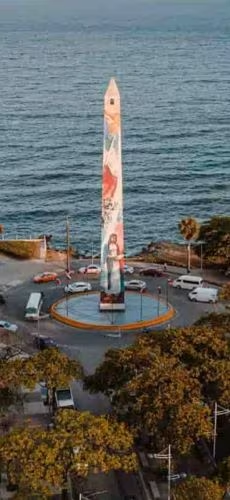
Columbus Lighthouse
Origin of the Columbus Lighthouse
The Columbus Lighthouse is located in Santo Domingo East and is one of the most famous monuments in the Dominican Republic. Built to commemorate the 500th anniversary of the discovery of America by Christopher Columbus, this monument also serves as a museum displaying cultural artefacts from different countries.
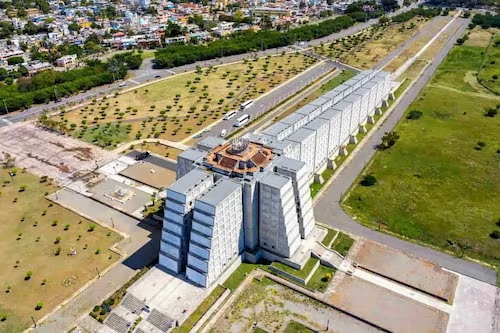
When the lighthouse is illuminated at night, its cross-shaped light can be seen up to 64km away in the dark. Inside there are exhibitions from different countries around the world, as well as space for conferences and temporary shows, but unfortunately it was closed shortly after its construction due to political factors in the country where it was built.
Design and Construction
Columbus Lighthouse was designed by the British architect J.L. Gleave, with its distinctive feature being the cross-shaped 210 metre tower.
The interior of the building contains 157 light sources that emit an arc of light at nightfall that can be seen from afar. This impressive display represents the power and impact of Columbus' discovery of America.
Current Function
The Columbus Lighthouse is both a monument and a museum. Inside you'll find exhibits with replicas of Columbus' ships, old maps and other historical artefacts that make for an incredible viewing experience - a must see for anyone interested in American culture and history!
The Mirabal Sisters House Museum
The Mirabal Sisters Story
In the province of Salcedo, Dominican Republic, there is a monument dedicated to Patricia, Minerva and Maria Teresa Mirabal, who were killed on 25 November 1960 by order of Rafael Trujillo for their opposition and advocacy of government policies and activities; their death is an emblematic example of human rights activism in the Dominican Republic.
The Mirabal sisters built their house in 1954, which is still in its original state, using concrete and wood construction. Set in a large garden, the house contains both antique furniture and personal effects belonging to them - such as paintings, dresses and tablecloths - as well as an abundance of everyday and personal items such as antique clothing.
Monument Design
This monument consists of three sculptures depicting the Mirabal Sisters, set in a reflection area. Each statue symbolises the courage and strength embodied by the Mirabal Sisters; commemorative plaques tell their life stories and the legacy of the Mirabal Sisters.
Current Relevance
The Mirabal Sisters Monument is a place of pilgrimage for Dominicans and international tourists alike. Every year, on 25 November - the International Day for the Elimination of Violence against Women - the monument is commemorated with actions and events aimed at raising awareness of women's rights and combating gender-based violence
The Mirabal Sisters House Museum
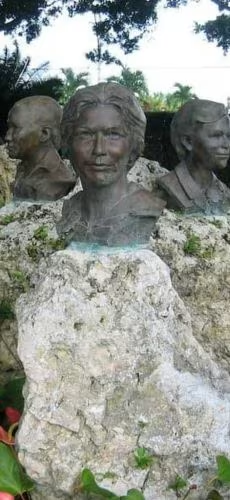
Monument to the Constituents
Historical context of the Constituents Monument
The Monumento a los Constituyentes is located in San Cristobal and pays homage to the founding fathers who drafted the first constitution of the Dominican Republic in 1844. The monument represents democratic values and the construction of the Dominican state.
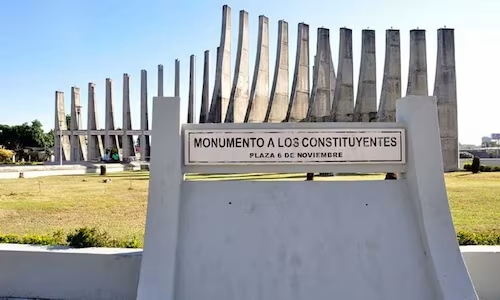
Structure and design
The monument is an impressive structure that pays homage to its components. It includes monuments and statues in honour of Juan Pablo Duarte, Francisco del Rosario Sanchez and Matias Ramon Mella, among others.
Meaning and celebrations
Constitution Day is celebrated on 6 November with official events and educational activities designed to promote an appreciation of Dominica's democratic system based on its Constitution. The monument serves as a constant reminder of our commitment to democracy and justice in our country.
Visiting Dominican monuments can be an engaging and enriching way to explore the country's rich heritage and culture. Five iconic landmarks that stand out are Santiago de los Caballeros' Monument to the Heroes of the Restoration; the Columbus Lighthouse and Obelisk in Santo Domingo; and the Mirabal Sisters Monument near Tamboril's North of Tamboril and the Constituents Monument in San Cristobal offer glimpses of the country's past and future respectively.
The next time you visit the Dominican Republic, be sure to put these places on your travel list. Each has a powerful legend to tell and remember, so you can enjoy their beauty.